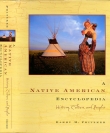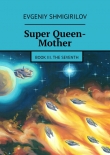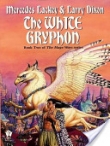
Текст книги "The British Study Edition of the Urantia Papers"
Автор книги: Tigran Aivazian
Жанр:
Религия
сообщить о нарушении
Текущая страница: 96 (всего у книги 295 страниц)
60:4.1 The great Cretaceous period was drawing to a close, and its termination marks the end of the great sea invasions of the continents. Particularly is this true of North America, where there had been just 24 great inundations. And though there were subsequent minor submergences, none of these can be compared with the extensive and lengthy marine invasions of this and previous ages. These alternate periods of land and sea dominance have occurred in 1,000,000-year cycles. There has been an agelong rhythm associated with this rise and fall of ocean floor and continental land levels. And these same rhythmical crustal movements will continue from this time on throughout the earth’s history but with diminishing frequency and extent.
60:4.2 This period also witnesses the end of the continental drift and the building of the modern mountains of Urantia. But the pressure of the continental masses and the thwarted momentum of their agelong drift are not the exclusive influences in mountain building. The chief and underlying factor in determining the location of a mountain range is the pre-existent lowland, or trough, which has become filled up with the comparatively lighter deposits of the land erosion and marine drifts of the preceding ages. These lighter areas of land are sometimes 4,572 to 6,100 m thick; therefore, when the crust is subjected to pressure from any cause, these lighter areas are the first to crumple up, fold, and rise upward to afford compensatory adjustment for the contending and conflicting forces and pressures at work in the earth’s crust or underneath the crust. Sometimes these upthrusts of land occur without folding. But in connection with the rise of the Rocky Mountains, great folding and tilting occurred, coupled with enormous overthrusts of the various layers, both underground and at the surface.
60:4.3 ¶ The oldest mountains of the world are located in Asia, Greenland, and northern Europe among those of the older east-west systems. The mid-age mountains are in the circumpacific group and in the second European east-west system, which was born at about the same time. This gigantic uprising is almost 16,000 km long, extending from Europe over into the West Indies land elevations. The youngest mountains are in the Rocky Mountain system, where, for ages, land elevations had occurred only to be successively covered by the sea, though some of the higher lands remained as islands. Subsequent to the formation of the mid-age mountains, a real mountain highland was elevated which was destined, subsequently, to be carved into the present Rocky Mountains by the combined artistry of nature’s elements.
60:4.4 The present North American Rocky Mountain region is not the original elevation of land; that elevation had been long since leveled by erosion and then re-elevated. The present front range of mountains is what is left of the remains of the original range which was re-elevated. Pikes Peak and Longs Peak are outstanding examples of this mountain activity, extending over two or more generations of mountain lives. These two peaks held their heads above water during several of the preceding inundations.
60:4.5 Biologically as well as geologically this was an eventful and active age on land and under water. Sea urchins increased while corals and crinoids decreased. The ammonites, of preponderant influence during a previous age, also rapidly declined. On land the fern forests were largely replaced by pine and other modern trees, including the gigantic redwoods. By the end of this period, while the placental mammal has not yet evolved, the biologic stage is fully set for the appearance, in a subsequent age, of the early ancestors of the future mammalian types.
60:4.6 ¶ And thus ends a long era of world evolution, extending from the early appearance of land life down to the more recent times of the immediate ancestors of the human species and its collateral branches. This, the Cretaceous age, covers 50,000,000 years and brings to a close the premammalian era of land life, which extends over a period of 100,000,000 years and is known as the Mesozoic.
60:4.7 [Presented by a Life Carrier of Nebadon assigned to Satania and now functioning on Urantia.]
PAPER № 61
THE MAMMALIAN ERA ON URANTIA
Life Carrier
61:0.1 The era of mammals extends from the times of the origin of placental mammals to the end of the ice age, covering a little less than 50,000,000 years.
61:0.2 During this Cenozoic age the world’s landscape presented an attractive appearance – rolling hills, broad valleys, wide rivers, and great forests. Twice during this sector of time the Panama Isthmus went up and down; three times the Bering Strait land bridge did the same. The animal types were both many and varied. The trees swarmed with birds, and the whole world was an animal paradise, notwithstanding the incessant struggle of the evolving animal species for supremacy.
61:0.3 The accumulated deposits of the five periods of this 50,000,000-year era contain the fossil records of the successive mammalian dynasties and lead right up through the times of the actual appearance of man himself.
1. THE NEW CONTINENTAL LAND STAGETHE AGE OF EARLY MAMMALS
61:1.1 50,000,000 years ago the land areas of the world were very generally above water or only slightly submerged. The formations and deposits of this period are both land and marine, but chiefly land. For a considerable time the land gradually rose but was simultaneously washed down to the lower levels and toward the seas.
61:1.2 Early in this period and in North America the placental type of mammals suddenly appeared, and they constituted the most important evolutionary development up to this time. Previous orders of nonplacental mammals had existed, but this new type sprang directly and suddenly from the pre-existent reptilian ancestor whose descendants had persisted on down through the times of dinosaur decline. The father of the placental mammals was a small, highly active, carnivorous, springing type of dinosaur.
61:1.3 Basic mammalian instincts began to be manifested in these primitive mammalian types. Mammals possess an immense survival advantage over all other forms of animal life in that they can:
61:1.4 1. Bring forth relatively mature and well-developed offspring.
61:1.5 2. Nourish, nurture, and protect their offspring with affectionate regard.
61:1.6 3. Employ their superior brain power in self-perpetuation.
61:1.7 4. Utilize increased agility in escaping from enemies.
61:1.8 5. Apply superior intelligence to environmental adjustment and adaptation.
61:1.9 ¶ 45,000,000 years ago the continental backbones were elevated in association with a very general sinking of the coast lines. Mammalian life was evolving rapidly. A small reptilian, egg-laying type of mammal flourished, and the ancestors of the later kangaroos roamed Australia. Soon there were small horses, fleet-footed rhinoceroses, tapirs with proboscises, primitive pigs, squirrels, lemurs, opossums, and several tribes of monkeylike animals. They were all small, primitive, and best suited to living among the forests of the mountain regions. A large ostrichlike land bird developed to a height of 10 m and laid an egg 22 by 33 cm. These were the ancestors of the later gigantic passenger birds that were so highly intelligent, and that onetime transported human beings through the air.
61:1.10 The mammals of the early Cenozoic lived on land, under the water, in the air, and among the treetops. They had from 1 to 11 pairs of mammary glands, and all were covered with considerable hair. In common with the later appearing orders, they developed two successive sets of teeth and possessed large brains in comparison to body size. But among them all no modern forms existed.
61:1.11 ¶ 40,000,000 years ago the land areas of the Northern Hemisphere began to elevate, and this was followed by new extensive land deposits and other terrestrial activities, including lava flows, warping, lake formation, and erosion.
61:1.12 During the latter part of this epoch most of Europe was submerged. Following a slight land rise the continent was covered by lakes and bays. The Arctic Ocean, through the Ural depression, ran south to connect with the Mediterranean Sea as it was then expanded northward, the highlands of the Alps, Carpathians, Apennines, and Pyrenees being up above the water as islands of the sea. The Isthmus of Panama was up; the Atlantic and Pacific Oceans were separated. North America was connected with Asia by the Bering Strait land bridge and with Europe by way of Greenland and Iceland. The earth circuit of land in northern latitudes was broken only by the Ural Straits, which connected the arctic seas with the enlarged Mediterranean.
61:1.13 Considerable foraminiferal limestone was deposited in European waters. Today this same stone is elevated to a height of 3 km in the Alps, 4.8 km in the Himalayas, and 6 km in Tibet. The chalk deposits of this period are found along the coasts of Africa and Australia, on the west coast of South America, and about the West Indies.
61:1.14 ¶ Throughout this so-called Eocene period the evolution of mammalian and other related forms of life continued with little or no interruption. North America was then connected by land with every continent except Australia, and the world was gradually overrun by primitive mammalian fauna of various types.
2. THE RECENT FLOOD STAGETHE AGE OF ADVANCED MAMMALS
61:2.1 This period was characterized by the further and rapid evolution of placental mammals, the more progressive forms of mammalian life developing during these times.
61:2.2 Although the early placental mammals sprang from carnivorous ancestors, very soon herbivorous branches developed, and, ere long, omnivorous mammalian families also sprang up. The angiosperms were the principal food of the rapidly increasing mammals, the modern land flora, including the majority of present-day plants and trees, having appeared during earlier periods.
61:2.3 ¶ 35,000,000 years ago marks the beginning of the age of placental-mammalian world domination. The southern land bridge was extensive, reconnecting the then enormous Antarctic continent with South America, South Africa, and Australia. In spite of the massing of land in high latitudes, the world climate remained relatively mild because of the enormous increase in the size of the tropic seas, nor was the land elevated sufficiently to produce glaciers. Extensive lava flows occurred in Greenland and Iceland, some coal being deposited between these layers.
61:2.4 Marked changes were taking place in the fauna of the planet. The sea life was undergoing great modification; most of the present-day orders of marine life were in existence, and foraminifers continued to play an important role. The insect life was much like that of the previous era. The Florissant fossil beds of Colourado belong to the later years of these far-distant times. Most of the living insect families go back to this period, but many then in existence are now extinct, though their fossils remain.
61:2.5 On land this was pre-eminently the age of mammalian renovation and expansion. Of the earlier and more primitive mammals, over 100 species were extinct before this period ended. Even the mammals of large size and small brain soon perished. Brains and agility had replaced armour and size in the progress of animal survival. And with the dinosaur family on the decline, the mammals slowly assumed domination of the earth, speedily and completely destroying the remainder of their reptilian ancestors.
61:2.6 Along with the disappearance of the dinosaurs, other and great changes occurred in the various branches of the saurian family. The surviving members of the early reptilian families are turtles, snakes, and crocodiles, together with the venerable frog, the only remaining group representative of man’s earlier ancestors.
61:2.7 Various groups of mammals had their origin in a unique animal now extinct. This carnivorous creature was something of a cross between a cat and a seal; it could live on land or in water and was highly intelligent and very active. In Europe the ancestor of the canine family evolved, soon giving rise to many species of small dogs. About the same time the gnawing rodents, including beavers, squirrels, gophers, mice, and rabbits, appeared and soon became a notable form of life, very little change having since occurred in this family. The later deposits of this period contain the fossil remains of dogs, cats, coons, and weasels in ancestral form.
61:2.8 ¶ 30,000,000 years ago the modern types of mammals began to make their appearance. Formerly the mammals had lived for the greater part in the hills, being of the mountainous types; suddenly there began the evolution of the plains or hoofed type, the grazing species, as differentiated from the clawed flesh eaters. These grazers sprang from an undifferentiated ancestor having 5 toes and 44 teeth, which perished before the end of the age. Toe evolution did not progress beyond the three-toed stage throughout this period.
61:2.9 The horse, an outstanding example of evolution, lived during these times in both North America and Europe, though his development was not fully completed until the later ice age. While the rhinoceros family appeared at the close of this period, it underwent its greatest expansion subsequently. A small hoglike creature also developed which became the ancestor of the many species of swine, peccaries, and hippopotamuses. Camels and llamas had their origin in North America about the middle of this period and overran the western plains. Later, the llamas migrated to South America, the camels to Europe, and soon both were extinct in North America, though a few camels survived up to the ice age.
61:2.10 About this time a notable thing occurred in western North America: The early ancestors of the ancient lemurs first made their appearance. While this family cannot be regarded as true lemurs, their coming marked the establishment of the line from which the true lemurs subsequently sprang.
61:2.11 Like the land serpents of a previous age which betook themselves to the seas, now a whole tribe of placental mammals deserted the land and took up their residence in the oceans. And they have ever since remained in the sea, yielding the modern whales, dolphins, porpoises, seals, and sea lions.
61:2.12 The bird life of the planet continued to develop, but with few important evolutionary changes. The majority of modern birds were existent, including gulls, herons, flamingoes, buzzards, falcons, eagles, owls, quails, and ostriches.
61:2.13 ¶ By the close of this Oligocene period, covering 10,000,000 years, the plant life, together with the marine life and the land animals, had very largely evolved and was present on earth much as today. Considerable specialization has subsequently appeared, but the ancestral forms of most living things were then alive.
3. THE MODERN MOUNTAIN STAGEAGE OF THE ELEPHANT AND THE HORSE
61:3.1 Land elevation and sea segregation were slowly changing the world’s weather, gradually cooling it, but the climate was still mild. Sequoias and magnolias grew in Greenland, but the subtropical plants were beginning to migrate southward. By the end of this period these warm-climate plants and trees had largely disappeared from the northern latitudes, their places being taken by more hardy plants and the deciduous trees.
61:3.2 There was a great increase in the varieties of grasses, and the teeth of many mammalian species gradually altered to conform to the present-day grazing type.
61:3.3 ¶ 25,000,000 years ago there was a slight land submergence following the long epoch of land elevation. The Rocky Mountain region remained highly elevated so that the deposition of erosion material continued throughout the lowlands to the east. The Sierras were well re-elevated; in fact, they have been rising ever since. The great 6 km vertical fault in the California region dates from this time.
61:3.4 ¶ 20,000,000 years ago was indeed the golden age of mammals. The Bering Strait land bridge was up, and many groups of animals migrated to North America from Asia, including the four-tusked mastodons, short-legged rhinoceroses, and many varieties of the cat family.
61:3.5 The first deer appeared, and North America was soon overrun by ruminants – deer, oxen, camels, bison, and several species of rhinoceroses – but the giant pigs, more than 1.8 m tall, became extinct.
61:3.6 The huge elephants of this and subsequent periods possessed large brains as well as large bodies, and they soon overran the entire world except Australia. For once the world was dominated by a huge animal with a brain sufficiently large to enable it to carry on. Confronted by the highly intelligent life of these ages, no animal the size of an elephant could have survived unless it had possessed a brain of large size and superior quality. In intelligence and adaptation the elephant is approached only by the horse and is surpassed only by man himself. Even so, of the 50 species of elephants in existence at the opening of this period, only 2 have survived.
61:3.7 ¶ 15,000,000 years ago the mountain regions of Eurasia were rising, and there was some volcanic activity throughout these regions, but nothing comparable to the lava flows of the Western Hemisphere. These unsettled conditions prevailed all over the world.
61:3.8 The Strait of Gibraltar closed, and Spain was connected with Africa by the old land bridge, but the Mediterranean flowed into the Atlantic through a narrow channel which extended across France, the mountain peaks and highlands appearing as islands above this ancient sea. Later on, these European seas began to withdraw. Still later, the Mediterranean was connected with the Indian Ocean, while at the close of this period the Suez region was elevated so that the Mediterranean became, for a time, an inland salt sea.
61:3.9 The Iceland land bridge submerged, and the arctic waters commingled with those of the Atlantic Ocean. The Atlantic coast of North America rapidly cooled, but the Pacific coast remained warmer than at present. The great ocean currents were in function and affected climate much as they do today.
61:3.10 Mammalian life continued to evolve. Enormous herds of horses joined the camels on the western plains of North America; this was truly the age of horses as well as of elephants. The horse’s brain is next in animal quality to that of the elephant, but in one respect it is decidedly inferior, for the horse never fully overcame the deep-seated propensity to flee when frightened. The horse lacks the emotional control of the elephant, while the elephant is greatly handicapped by size and lack of agility. During this period an animal evolved which was somewhat like both the elephant and the horse, but it was soon destroyed by the rapidly increasing cat family.
61:3.11 ¶ As Urantia is entering the so-called “horseless age,” you should pause and ponder what this animal meant to your ancestors. Men first used horses for food, then for travel, and later in agriculture and war. The horse has long served mankind and has played an important part in the development of human civilization.
61:3.12 ¶ The biologic developments of this period contributed much toward the setting of the stage for the subsequent appearance of man. In central Asia the true types of both the primitive monkey and the gorilla evolved, having a common ancestor, now extinct. But neither of these species is concerned in the line of living beings which were, later on, to become the ancestors of the human race.
61:3.13 The dog family was represented by several groups, notably wolves and foxes; the cat tribe, by panthers and large sabre-toothed tigers, the latter first evolving in North America. The modern cat and dog families increased in numbers all over the world. Weasels, martens[1] [1]
martens, In 1955 text: martins. A single mistaken keystroke could have produced martins from an intended martens. It is also possible, however, that the original form was the author’s choice, being a correct, though less common, variant. (We cannot assert that the author would not use an unusual variant, because coons was used for raccoons only two pages previously. (61:2.7 in the text.) However, even if originally correct, this usage of “martin” is no longer current so the modernization of the spelling is reasonable.
[Закрыть], otters, and raccoons thrived and developed throughout the northern latitudes.
61:3.14 Birds continued to evolve, though few marked changes occurred. Reptiles were similar to modern types – snakes, crocodiles, and turtles.
61:3.15 ¶ Thus drew to a close a very eventful and interesting period of the world’s history. This age of the elephant and the horse is known as the Miocene.








